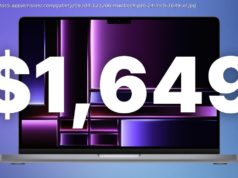The Titan V brings Nvidia’s next-gen Volta GPU to the PC. Here’s what PC gamers need to know.
But that doesn’t mean we humble PC gamers can’t glean information from Volta’s current AI-centric incarnations. Here are five key things you need to know about the Titan V and Nvidia’s Volta GPU.
If you’re looking for hot details about the future of GeForce graphics cards, well, keep waiting. Like the Pascal GPU architecture before it, Volta’s grand reveal comes in the form of a monstrous Tesla V100 GPU built for data centers, and the PC-ready Titan V sticks to the same GPU configuration with a slightly reduced memory system. CEO Jen-Hsun Huang focused on the hardware’s AI chops and announced a new $149,000 DGX-1 deep learning system with eight of the Volta processors inside during the V100’s launch.
Big spenders get first crack at Volta, while the GTX 10-series consumer graphics cards are still flying off the shelves thanks to cryptocurrency miners. That said, the details Nvidia released about Volta hint at what we might expect from the inevitable next-gen GeForce cards.
The Tesla V100’s Volta GPU.
It’s impossible to know what GeForce graphics cards based on Volta will look like, but the Titan Xp wound up with a full-blown implementation of the Tesla P100’s Pascal GPU, and it’s the fastest gaming GPU in the world. Heck, the GeForce GTX 1080 Ti sports a slightly nerfed version with 3,584 CUDA cores, and it can still game at 4K resolution without breaking a sweat.
Nvidia says the Tesla V100 offers 1.5 times the teraflops performance of its Pascal predecessor. For yet another point of reference, the Titan V packs four times as many CUDA cores as the GeForce GTX 1060, twice as many as the beastly GTX 1080, and 320 texture units compared to the GTX 1080 Ti’s 224.
Nvidia spared no expense in preparing Volta’s flagship. The GV100 GPU inside the Titan V and Tesla V100 use TSMC’s new 12nm “FFN” manufacturing process technology, an upgrade over the 16nm tech that GTX 10-series GPUs rely on. Smaller transistors mean better performance and power efficiency.
It also includes 640 “tensor cores” designed to greatly accelerate machine learning, and the Tesla V100 supports the second-gen version of Nvidia’s NVLink technology, which the company says surpasses PCIe transfer speeds by a whopping tenfold.
A high-level look at the Tesla V100’s specs.
The Volta GPU inside the Tesla V100 is GARGANTUAN.
In any case, there’s never been a GPU this large in a consumer graphics card before. Whether this gigantic version of Volta appears in the GeForce lineup of tomorrow depends on Nvidia’s willingness to break new ground. Yields might be better now that TSMC and Nvidia have so many months of Volta production underneath their belts, but consumers won’t pay anywhere near the premium that businesses will for something this radical.
The arrival of the Titan V proves that Nvidia can indeed stuff the massive GV100 GPU into a traditional dual-slot graphics card, which is mighty impressive indeed. The immense space savings provided by HBM2 likely plays a part in that.
Memory manufacturers have already announced that GDDR6 will be coming to graphics cards in 2018. It’s unknown whether next-gen GeForce cards will include that, but considering how well the GDDR5 and GDDR5X VRAM in the GTX 10-series performs, expect non-flagship GeForce Volta cards to stick to traditional memory configurations.
Consumer Volta cards will almost undoubtedly ditch the relentlessly compute-centric tensor cores found in the Titan V. That could give Nvidia more room to cram in game-boosting technologies. Also note that the full-fat GP102 “Pascal” GPU gained an extra 100MHz of clock speed in the move from the Tesla data center card to the GTX 1080 Ti.
We’ll hear more about the next-gen GeForce lineup someday, but whether that’ll be sooner or later is very much up in the air. In the meantime, head over to PCWorld’s guide to the best graphics cards to find the best fit for your budget today.






